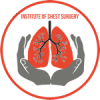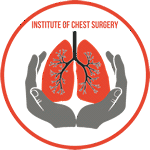Aspergilloma, commonly known as a “fungus ball,” is a fungal infection that primarily affects the respiratory system, especially the lungs. This condition occurs when the fungus Aspergillus forms a ball-like mass within pre-existing lung cavities or airway spaces. Aspergilloma may not always manifest noticeable symptoms, but when it does, early recognition is crucial to prevent potential complications. In this blog post, we will delve into the various symptoms of aspergilloma, understanding their significance and the importance of early intervention for optimal respiratory health.
1. Persistent Cough:
A persistent cough is one of the hallmark symptoms of aspergilloma. The cough may be dry or productive, occasionally producing mucus or blood. If you notice a prolonged cough that does not improve with standard cough medications, it’s essential to consider the possibility of aspergilloma.
2. Difficulty Breathing (Dyspnea):
As the aspergilloma grows or obstructs the airways, it can lead to difficulty breathing, known as dyspnea. Patients may feel breathless, particularly during physical activities or while lying down. Persistent dyspnea requires medical evaluation to identify the underlying cause, including the possibility of aspergilloma.
3. Chest Pain:
Aspergilloma can cause localized chest pain, often felt in the area near the fungal mass. The pain may vary in intensity and may worsen during deep breathing or coughing. Any unexplained or persistent chest pain should prompt a thorough medical assessment.
4. Unexplained Weight Loss:
Unintentional weight loss is a common symptom associated with various health conditions, including aspergilloma. The infection can disrupt normal eating patterns and metabolism, leading to unintended weight loss over time.
5. Fatigue and Weakness:
Patients with aspergilloma may experience ongoing fatigue and weakness. The body’s immune response to the fungal infection and the impact on respiratory function can contribute to these symptoms.
6. Recurrent Fevers and Night Sweats:
In some cases, aspergilloma can lead to recurrent low-grade fevers and night sweats. These symptoms indicate an ongoing inflammatory response in the body, necessitating medical attention.
7. Hemoptysis (Coughing up Blood):
Hemoptysis, or coughing up blood, is a concerning symptom associated with aspergilloma. It can range from mild streaks of blood in the sputum to more severe bleeding. Hemoptysis should never be ignored and requires immediate medical evaluation.
8. Wheezing:
Aspergilloma can cause wheezing, a high-pitched whistling sound that occurs during breathing. Wheezing is indicative of narrowed or obstructed airways, which may occur due to the presence of the fungal mass in the lungs.
9. Recurrent Respiratory Infections:
Individuals with aspergilloma may experience frequent respiratory infections, such as bronchitis or pneumonia. These infections can be more severe and challenging to treat due to the presence of the fungal mass in the lungs.
10. Increased Production of Sputum:
Aspergilloma can stimulate the production of excess sputum, a thick, sticky substance that lines the respiratory tract. This can contribute to coughing and respiratory discomfort.
11. Chest X-ray and Imaging Findings:
In many cases, aspergilloma is incidentally detected on chest X-rays or other imaging studies conducted for unrelated reasons. The characteristic appearance of the fungus ball on imaging can prompt further investigations to confirm the diagnosis.
Conclusion
Recognizing the symptoms of aspergilloma is essential for early intervention and improved respiratory health. A persistent cough, difficulty breathing, chest pain, and hemoptysis are significant signs that warrant medical evaluation. Unexplained weight loss, fatigue, recurrent fevers, night sweats, and wheezing may also be associated with aspergilloma. If you or someone you know experiences any of these symptoms, especially in the context of existing lung conditions or compromised immune systems, seeking prompt medical attention is vital.
A qualified healthcare professional, like Dr. Mohan Venkatesh Pulle, can conduct a thorough evaluation, perform appropriate tests, and develop an individualized treatment plan to address the condition effectively. Early detection and proper management of aspergilloma can help prevent complications and ensure better outcomes for patients.
Remember, the information provided in this article is for educational purposes only and should not replace professional medical advice. If you suspect aspergilloma or experience concerning respiratory symptoms, consult a healthcare professional promptly for accurate diagnosis and appropriate care.







